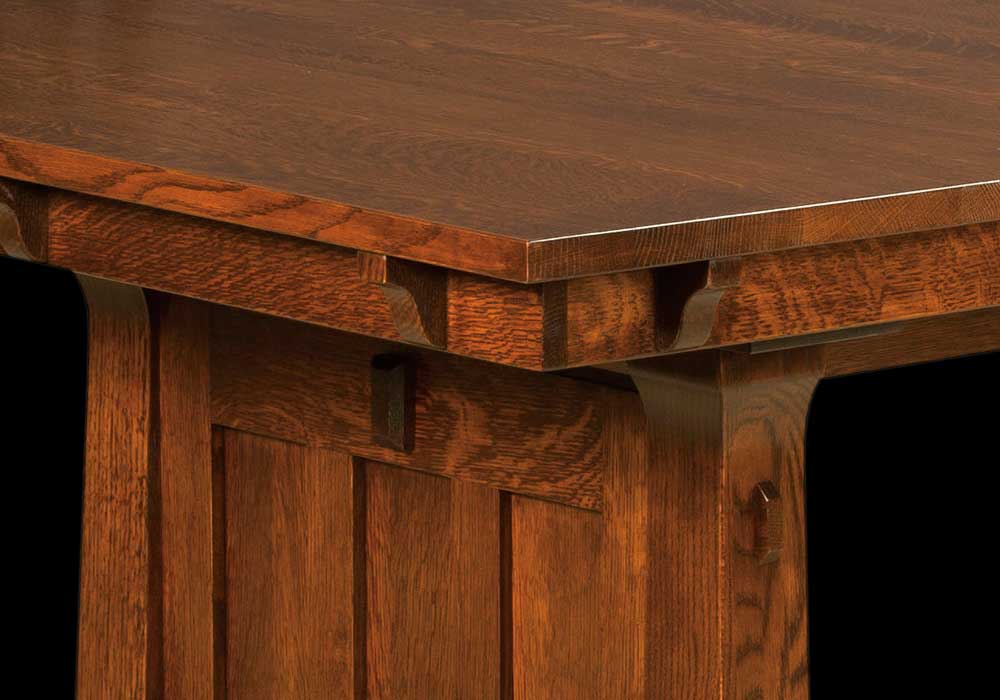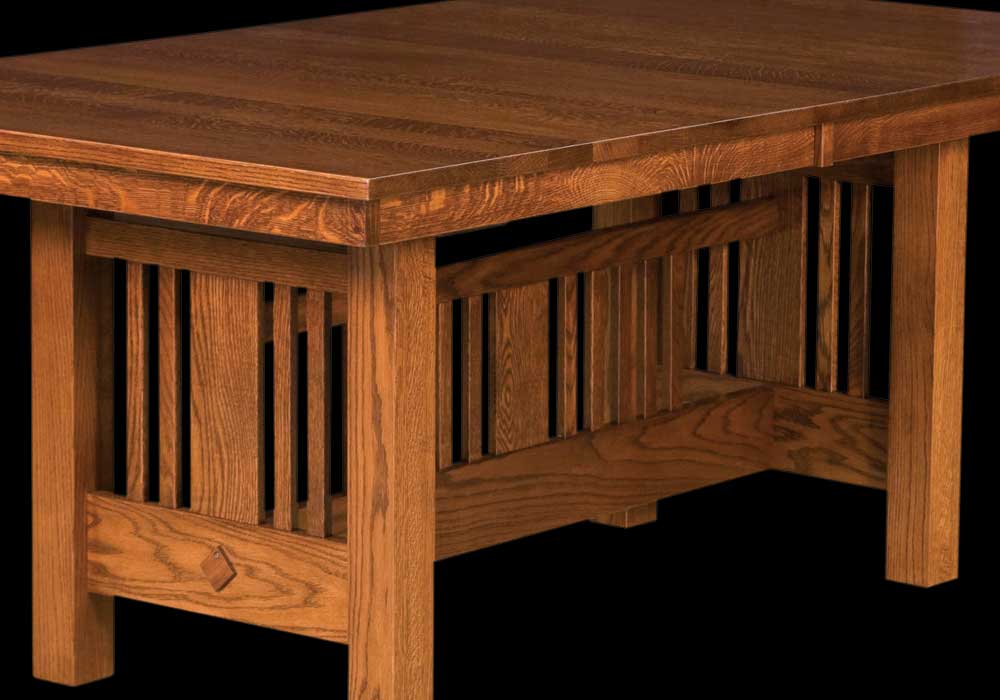American furniture styles: Arts & Crafts, Mission and Craftsman
Any discussion of fine wood furniture is eventually going to come back around to what style or period of design was the most elegant, enduring and chic. For most, when it is American furniture styles that are being debated the three most loved schools are going to be Arts & Crafts, Mission, and Craftsman. All three of which could be said to have come to our shores thanks to one man who was arguably the most influential furniture designer in the history of our country, Gustav Stickley.
Before we go any further it should be said that everything in this article is based, for the most part, on historical fact rather than on legion or advertising hype that has become accepted as fact. To state it simply, if you don't like having your romantic ideas about furniture design history crushed, stop reading now. The truth isn't always as pretty as we would hope it to be.
The true progression of the three schools of furniture design we are going to discuss here should be Arts & Crafts, Craftsman, and Mission. So, in the interest of keeping things as well organized as possible, we will take them in chronological order. As a lover of simplicity, I think Gustav would be pleased.

ENGLISH Arts & Crafts Furniture
In general, Arts & Crafts furniture is considered to be pieces that have smaller, thinner lines than Stickley's Craftsman/Mission work. It included accents such as carvings, inlay work, curved boards, and other decorative details that Gustav would have never dreamed of including in his own designs. In many ways, it could be described as Craftsman with more panache and less substance.
Arts & Crafts as a style of furniture is actually a misnomer and there really nothing about it that is American. Arts and Crafts furniture were actually more of a social movement than a style. In the 1800s the industrial revolution was in full swing in England. As a response to the flood of cheap massed produced goods putting the local artisans out of work and transforming them into factory workers, the Arts & Crafts movement was born.
The idea was for local woodworkers to produce solid wood tables and other pieces of furniture to be sold to the local middle-class citizenry. The ironic thing about this movement was that the cost of production for these pieces was so high that the only people who could actually afford them were the factory owners that its creators were protesting against.
In the end, the more enterprising leaders in the movement hired other craftsman and set up what could best be described as mini factories of their own in order to compete. Their protest literature became little more than a marketing scheme and once people discovered this, the movement died not with a bang but a whimper.
What has become known and widely accepted as American Arts & Crafts Furniture is really little more than furniture that is either too light in construction or heavy in adornment to meet Stickley's standards of integrity of design and craftsmanship.
Craftsman Style Furniture
Craftsman style furniture, in general terms, is any furniture that is based on the timeless designs of Gustav Stickley and produced by his and to a lesser degree his brother's companies. It is most characterized by clean, simple lines, sturdy construction, its lack of nonfunctional adornment and perfection of fit and finish. Needless to say that with such attention to detail only solid natural woods were used and oak was the dominant wood of choice.
The story goes that Gustav went on vacation to England in the late 1800's. Being a woodworker he was naturally interested in the techniques being used and the designs that were being produced there at the time. This happily coincided with the early days of the English Arts & Crafts Movement.
Having grown tired of what he termed the garish Victorian Era designs, Stickley fell in love with the basic, simpler furniture that he was seeing coming out of the true one man craft shops. Still, to his taste, he found them to be slightly over decorative and too light in weight. In his opinion furniture should be built to stand the test of time and daily use.
Returning home, he set himself to working on his own designs. He was definitely influenced by what he had seen of the English Arts & Crafts school of thought, but his designs were simpler, straighter, and larger in proportions to better fit what he considered the American ideals of strength and sturdiness.
Also being a master of marketing, it was Gustav himself who coined the name "Craftsmen" for his style of furniture. Stickley realized that this single word would bring to mind words like handmade, well made or artisan made to people, all of which would mean quality in the consumer's mind. He even used it as the name of the magazine he launched in order to drive sales for his company. The man was at least a borderline genius.
Some of the more common traits of Craftsman furniture are:
- Evenly spaced vertical slats
- Simple square or round knobs
- Straight backs, legs and arms on the chairs
- Corbels supporting heavy table edges and chair arms
- Doweled joints
- Tenon and key construction
- Structural elements such as tenons and dowels left exposed
- Hand-hammered metal pulls, latches, screws

Mission Style Furniture
There is some contention as to how the term "Mission" became attached to furniture. Characterized by flat panels and clean vertical lines derived from the grain of quarter sawn wood as well as overall simplicity of design, mission Furniture is usually lighter and more severe than Craftsman Style.
Many feel the term was first popularized by A.J. Forbes to describe a chair he built for the Swedenborgian Church in San Francisco, California in 1894. Others argue that the term came to be as a result of a newspaper article written about Gustav Stickley's Craftsman Furniture.
The story goes that one of Stickley Furniture's salesmen was talking to a reporter and pointed out a piece in his catalog saying that there was a similar piece in a mission in Southern California. When the newspaperman wrote his article he seized on this and used term "Mission Style" in both his main title and side bar heading. The article was syndicated and the name "Mission Style" caught on from coast to coast.
Which version is true? It doesn't really matter though it is a fun subject to start arguments with at a craftsman's conventions.
To sum up the subject in as succinct a way as possible:
- Arts & Crafts Furniture is Craftsman Furniture built slightly lighter and with a little more flair.
- Mission Furniture is Craftsman Furniture built lighter and with the simplistic design concept taken to the point of being austere.
- Craftsman Furniture can include any of the above. It could be said that it is the father that the others were born from.
What they all have in common is beauty of fit and finish, attention to detail and being constructed from the finest hardwoods available.
If you would like one of these beautifully designed pieces in or your home but prefer not to spend the thousands of dollars they demand at auction, contact Home and Timber to order solid hardwood tables, chairs and other pieces of handcrafted furniture.

